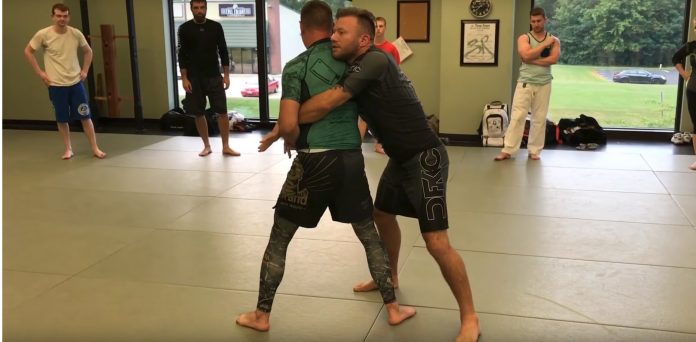
We’re less than 48 hours from one of the biggest fights in MMA history. Lightweight champion Khabib Nurmaghomedov is set to face former two-division champ, Conor McGregor. The grappling world is mostly on Khabib’s side, due to the fact that the Dagestani is one hell of a grappler. One of Khabib’s signature moves is the bodylock takedown, a wrestling staple that he uses to perfection. That said, the bodylock takedown works just as well for Jiu-Jitsu, as it does in the cage. In fact, the bodylock concept is not restricted only to takedowns in BJJ.
If there’s one prerequisite of a grappling technique to work for BJJ, it is variety. If you can use one move, from multiple positions, then it fits BJJ perfectly. All it takes is for the move’s basic principles to work from different positions. The bodylock takedown fit this bill as good as any other Jiu-Jitsu technique. It is a wrestling classic that, originally, offers two ways of getting the fight to the ground. You can do it from the front or the back, which is where it really benefits BJJ
The bodylock takedown not only offers ways to the ground but also gets you behind an opponent. We all know that when you get the back, you’re pretty much on cruise control. But that’s not all, The bodylock concepts work just as well on the ground. On the subject of back control, you can use a bodylock variation to get even tighter control over your opponent, freeing up your arms to attack. Furthermore, you can even use the bodylock to pass difficult open guards, like the butterfly. Keep reading and you’ll see how.
What is A Bodylock?
A body lock is generally any position that offers you direct control over the opponent’s hips via a closed circuit. The closed circuit is usually by connecting your arms around the opponent’s hips. it can, however, also be done with your legs.
The bodylock offers a lot of options to grapplers, both standing and on the ground. For one, it is perfect for maintaining close contact with an opponent. We all know that space is your enemy when you’re looking to control someone in Jiu-Jitsu. The bodylock takes care of it by placing you as close to your opponent as possible, from the front, back or side.
Moreover, the fact that you have your arms tied together means the control is really difficult to break. The usual positioning of a bodylock is beneath both the opponent’s arms, directly around their hips. In certain cases, you can even trap both their arms, but this doesn’t get you as much control. From there, you can lift or trip for a bodylock takedown and keep your arm configuration until you get a great position.
Bodylock Takedown
The bodylcok takedown usually takes the match to the ground from two general directions. The preferred method is to get behind your opponent, or at least be at their side. Another good variation, although not as versatile, is to stay in the bodylock from the front, where most entries are. Both directions offer distinct options for taking the match to the ground. The best thing about them is that they’re easily interchangeable, albeit mostly from front to back.
Getting in position for a bodylock takedown is fairly straightforward. There are plenty of grip positions and situations you can use to set up a bodylock. The easiest way to get it is via a duck under. From a basic head and arm control standing, you simply switch the control over the arm by placing our arm over an inside the opponent’s. Once there, you can hook their triceps to release your head and open a path to the back.
All other tie-ups, both Gi and No-Gi offer a path to the bodylock. You can get it via arm drags, fake takedown attempts, as a follow up on a failed Judo throw, as a counter etc.
Finish From The Back
Using the duck under, the basic idea is to get behind your opponent, but not straight back. When you’re on the feet, begin directly behind an opponent might backfire. Think of a victor roll to a kneebar and you’ll see what I mean. Instead, the goal is to use a correct angle for maximum control. Once you’re past the arm via a duck under, remain behind the opponent’s hip, while locking both arms on the opposite side. An S-grip would do just fine.
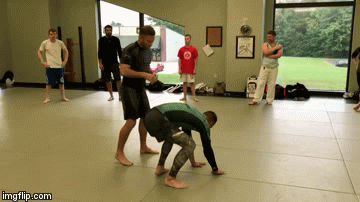
Once you have posture and optimal grips, you can move into takedown position. For that, you’ll first need to adjust your stance. You’ll need to get both legs behind the opponent’ leg on the side where you are positioned. Whenever you’re doing a bodylock takedown in BJJ, make sure you do not lift your opponent off the ground as in wrestling. Slams are illegal in BJJ, and trips offer much more control anyway. So, once you get both legs behind, all that’s left to do is drag the opponent down.
Front Bodylock Takedown
Getting into position for the front bodylock takedown is similar to the one before. the duck under is again the method of choice. Actually, you should be going for the back every time you see the opening. However, some opponents are wise to what’s happening and they’ll turn towards you really fast. This will get you a bodylock, but also place you to the front of your opponent.

Just like from the back, you’ll to trip instead of a lift. While lifting your opponent in the air might be much more attractive, tripping them is more high-percentage. The key moment here is choosing the direction of the trip. When you’re in a bodylock, you’ll have to position your legs to the side that ‘s opposite of the side you’re facing with your head. This gets you around the opponent. InN this instance though, you’ll only use one leg for the trip.
Bodylock Pass
The place where the bodylock takedown concept gets it BJJ-specific use is in the guard passing department. While there are ways you can use bodylocks concepts against most guards, the best bet is the butterfly or half guard. Actually, the bodylock ties in great with the over-under pass. That said, the starting position for a bodylock pass is the same as with the front bodylock takedown.
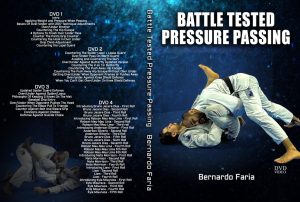
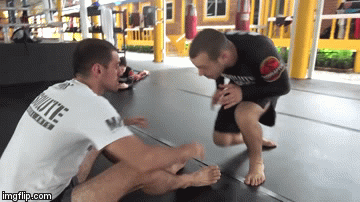
Before you think about passing, you’ll need to sprawl back, extending the leg opposite of where you’re facing. this will neutralize their hooks so that you can switch your head to the opposite side. Now you can lift your hips, placing pressure with your shoulder. Even if they close half guard, a simple hip switch and a butterfly hook will get you straight into side control or mount.
Bodylock Back Control
Finally, the back control variation of a Bodylock is one that you’re probably familiar with. In BJJ we call ti the body triangle. UNliek with the bodylock takedown and pass, the lock is now done with your legs instead of your arms. Form regular seatbelt control you want to be on the side of your choking arm before you go for a bodylock. The one most important thing you need to remember about a rear Bodylock is that it has to be on the top side of your opponent. Otherwise, they might utilize and easy and painful counter.
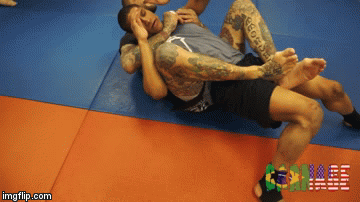
Double Leg Takedown – How to Do It & The Most Common Mistakes
https://bjj-world.com/how-to-make-single-leg-takedown-work/


![Darce Choke Encyclopedia – Origins, Mechanics and Variations [2025] BJJ, choke, Brabo, BJJ Darce Choke, D'arce Choke, Darce BJJ Choke](https://bjj-world.com/wp-content/uploads/2017/11/JungPoirierLeeYahoo-218x150.jpg)











![Ultimate Study Tomoe Nage Neil Adams BJJ DVD Review [2025] Ultimate Study Tomoe Nage Neil Adams BJJ DVD Review](https://bjj-world.com/wp-content/uploads/2025/04/tomoe-nage-neil-adams-bjj-dvd-review-218x150.png)

![[VIDEO] Ex-UFC Champ Aljamain Sterling Gets Choked Out Cold on Russian TUF-Style Show VIDEO - Aljamain Sterling Gets Choked Out Cold on Russian Reality Show](https://bjj-world.com/wp-content/uploads/2025/04/LEG-GRABS-2-218x150.png)
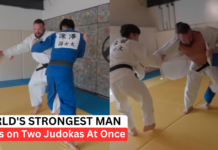
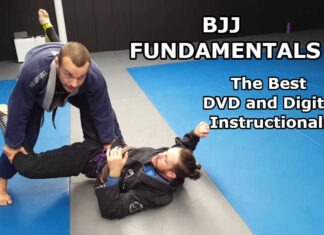


![Higher Tripod Passing Craig Jones DVD Review [2025] Higher Tripod Passing Craig Jones DVD Review](https://bjj-world.com/wp-content/uploads/2025/02/higher-tripod-passing-craig-jones-dvd-review-100x70.png)
![Dynamic Headquarters Passing Jason Rau DVD Review [2024] Dynamic Headquarters Passing Jason Rau DVD Review](https://bjj-world.com/wp-content/uploads/2024/10/dynamic-headquarters-passing-jason-rau-dvd-review-100x70.png)
![Ginastica Natural Alvaro Romano DVD Review [2024] Ginastica Natural Alvaro Romano DVD Review](https://bjj-world.com/wp-content/uploads/2024/12/ginastica-natural-alvaro-romano-dvd-review-100x70.png)
![Baseball Chokes From Everywhere Magid Hage DVD Review [2025] Baseball Chokes From Everywhere Magid Hage DVD Review](https://bjj-world.com/wp-content/uploads/2025/01/baseball-chokes-from-everywhere-magid-hage-dvd-review-100x70.png)

![Don’t Stand Up Chris Wojcik DVD Review [2024] Don't Stand Up Chris Wojcik DVD Review](https://bjj-world.com/wp-content/uploads/2024/11/dont-stand-up-chris-wojcik-dvd-review-100x70.png)


![Kill The Underhook Dima Murovanni DVD Review [2024] Kill The Underhook Dima Murovanni DVD Review](https://bjj-world.com/wp-content/uploads/2024/10/kill-the-underhook-dima-murovanni-dvd-review-100x70.png)









![Best Marcelo Garcia Techniques by Team Marcelo Garcia DVD Review [2025] Best Marcelo Garcia Techniques by Team Marcelo Garcia DVD Review](https://bjj-world.com/wp-content/uploads/2025/02/best-marcelo-garcia-techniques-dvd-review-100x70.png)


![Advanced Immortal Clinch Matt Brown DVD Review [2024] Advanced Immortal Clinch Matt Brown DVD Review](https://bjj-world.com/wp-content/uploads/2024/09/advanced-immortal-clinch-matt-brown-dvd-review-100x70.png)
